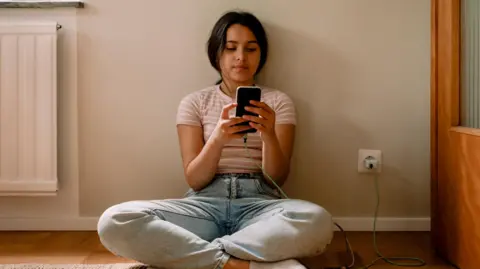Australia could use a range of technologies to implement its social media ban for under-16s but all have risks or shortcomings, a report has found.
The government says its ban, which comes into effect in December, is designed to limit the harmful impacts of social media. The policy has been touted as a world-first and is being watched closely by leaders globally.
Under the new laws, platforms must take reasonable steps to prevent Australian children from creating accounts on their sites, and deactivate existing ones.
Though the move is popular with many parents, experts have raised concerns over data privacy and the accuracy of age verification technology.
The federal government commissioned the UK-based Age Check Certification Scheme to test the ways Australia could enforce the ban, and its final report was published on Sunday.
It looked at a variety of methods - including formal verification using government documents, parental approval, or technologies to determine age based on facial structure, gestures, or behaviours - and found all were technically possible.
But we did not find a single ubiquitous solution that would suit all use cases, nor did we find solutions that were guaranteed to be effective in all deployments, it said.
Verification using identity documents was cited as the most accurate method, but the report identified concerns that platforms may keep this data longer than required and anticipated sharing it with regulators, both of which would leave users' privacy at risk.
Australia - like much of the world - has in recent years seen a series of high-profile data breaches, including several where sensitive personal information was stolen and sold or published.
Facial assessment technology was found to be 92% accurate for people aged 18 or over, but there is a buffer zone - about two to three years either side of 16 - where it is less accurate. This could lead to false positives, allowing children to create accounts, and false negatives, wrongly restricting access to eligible users.
There are also privacy and accuracy concerns with parental approval methods.
The report recommended that the methods should be layered to create the most robust system and highlighted that many of the technology providers were looking at ways to address circumvention through things like document forgeries and VPNs (virtual private networks).
Communications Minister Anika Wells stated there was no one-size-fits-all solution, emphasizing that age checks could be private, efficient and effective. She also urged tech companies to be prepared for the December implementation.
Under the ban, tech companies could face fines of up to A$50 million if they fail to take reasonable steps to restrict under-16s from accessing their platforms. The ban applies to popular platforms like Facebook, Instagram, Snapchat, and YouTube.
Polling indicates most Australian adults support this initiative, viewing it as a necessary step to protect younger users. However, some mental health advocates argue the policy might push kids to less-regulated areas of the internet and cut them off from beneficial connections.
These advocates suggest a focus on better policing of harmful content on existing social media platforms rather than an outright ban, alongside preparing children for real online experiences.

















